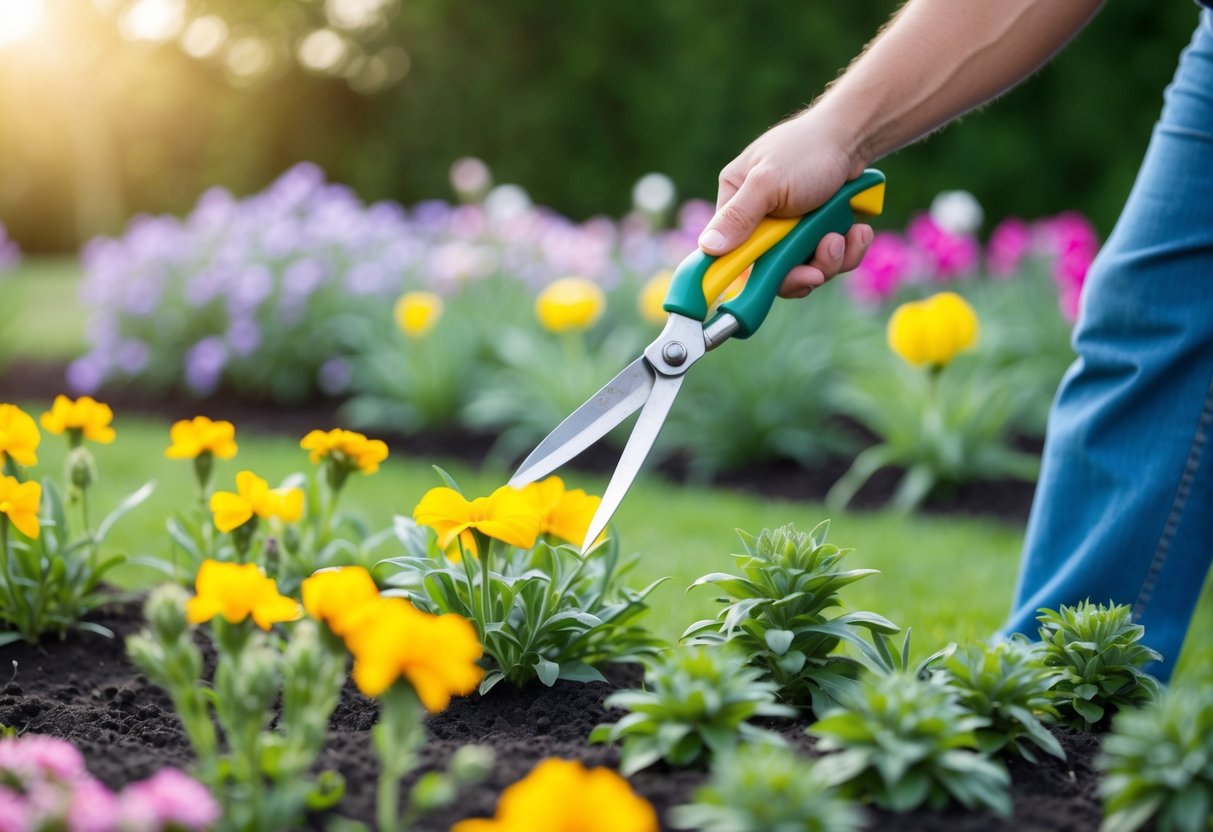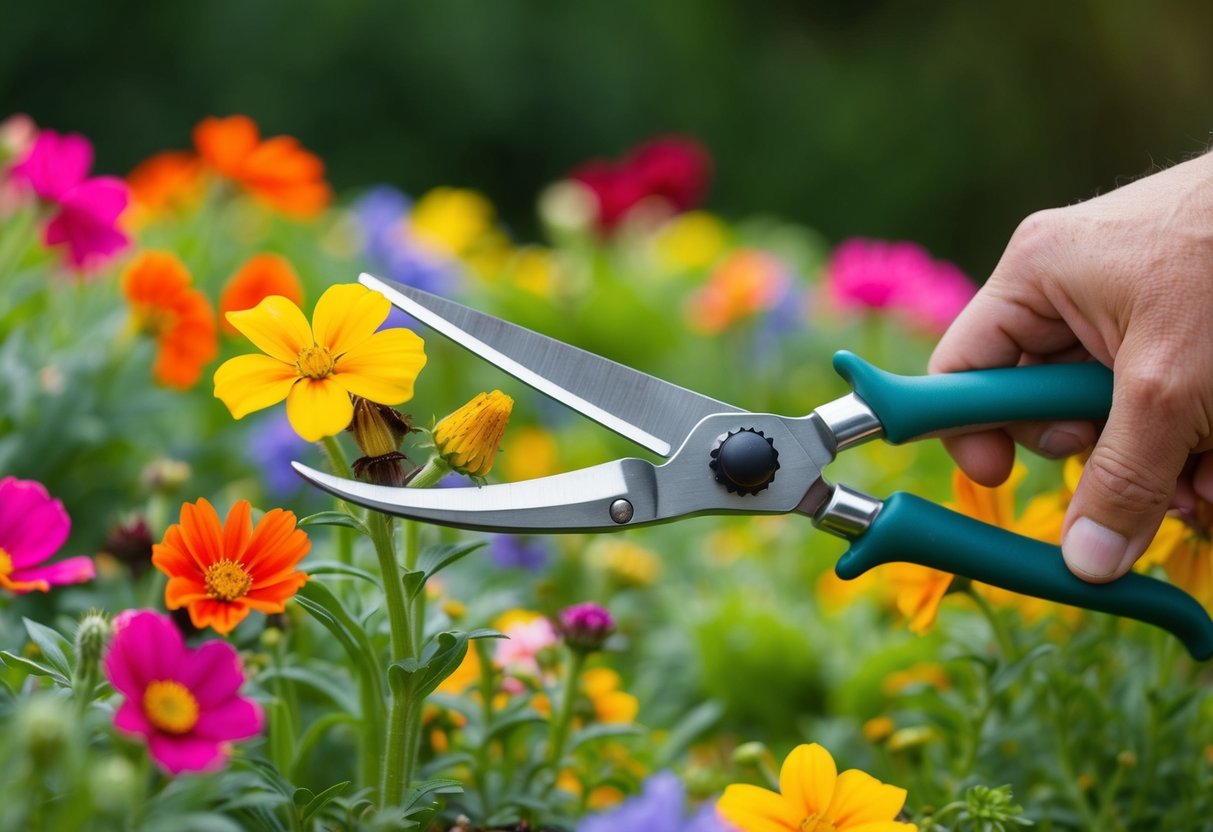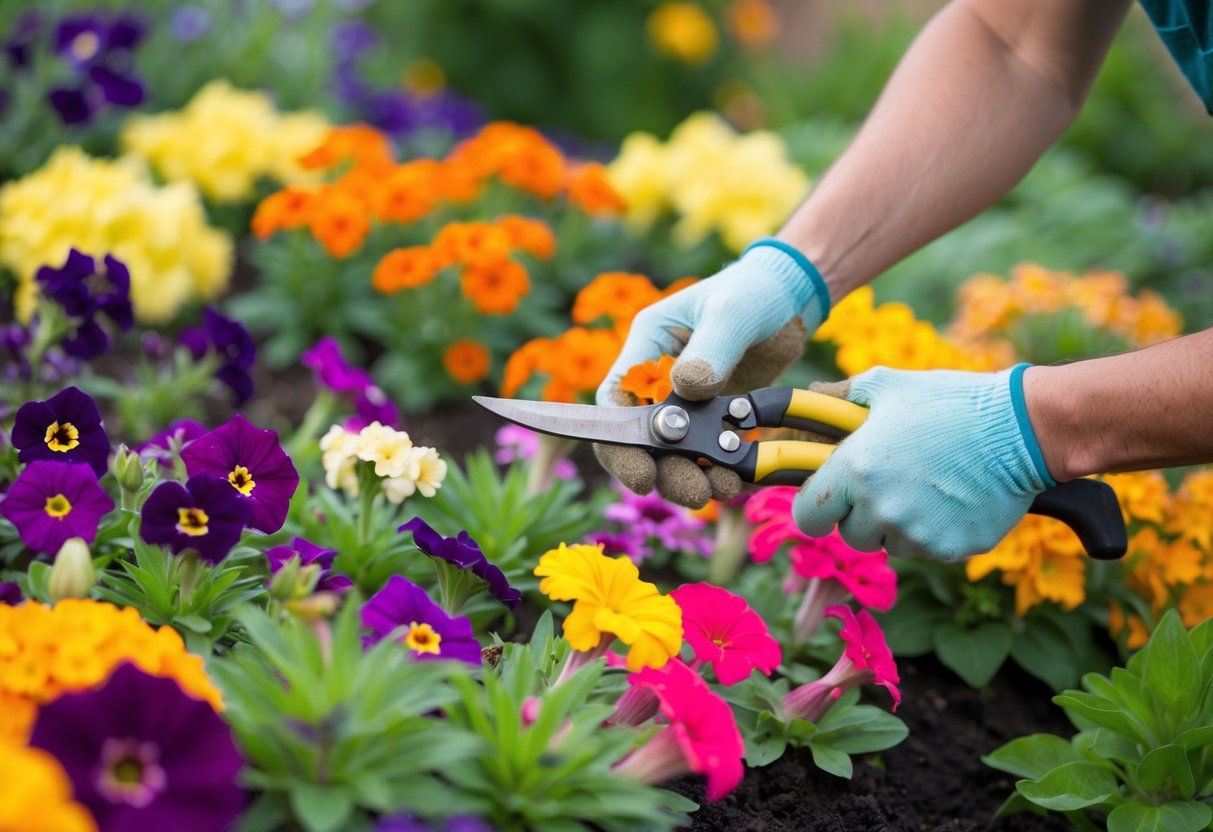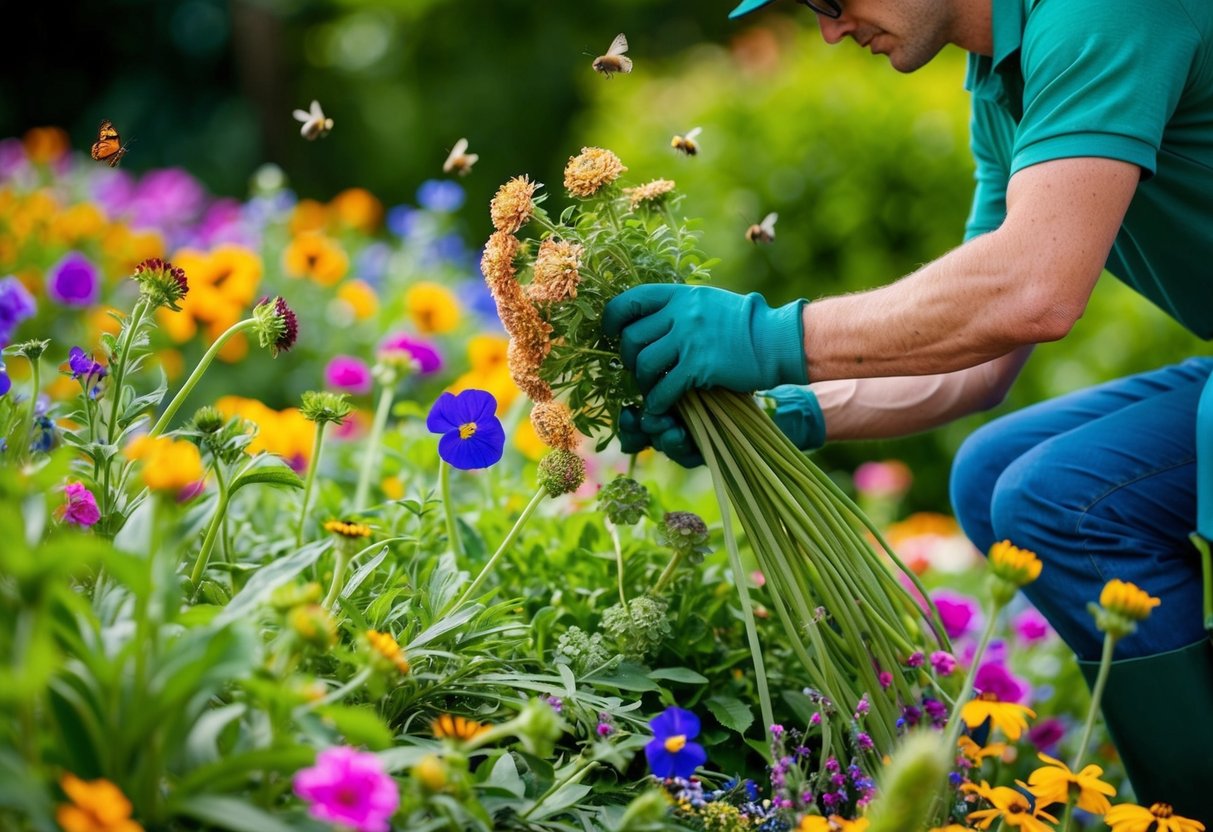Should You Deadhead Bedding Plants? Tips for a Blooming Garden
Gardening brings joy and beauty to your home, and keeping your bedding plants looking their best is part of the fun. When you deadhead these plants, you remove the spent blooms, encouraging more vibrant flowers to grow. Deadheading helps your bedding plants focus their energy on producing new buds, which keeps them looking fresh and lively throughout the season.

Some people might not realize that neglecting this simple task can lead plants to focus on seed production instead of flowering. This shift can slow down the blooming process, so a quick snip here and there can really make a difference. If you’re wondering about the best way to care for your bedding plants, deadheading is definitely one practice to consider.
By incorporating regular deadheading into your gardening routine, your flowers can flourish more beautifully all season long. You’ll likely notice fuller blooms and maybe even get a sense of satisfaction knowing your green thumb is getting a little greener.
Understanding Deadheading and Its Importance

Deadheading plays a vital role in gardening, especially for keeping your plants looking fresh and vibrant. It helps produce more flowers and maintain plant health, and it can extend the blooming period.
What Is Deadheading?
Deadheading refers to removing faded or spent blooms from plants. As flowers start to lose their vibrancy, they are snipped off to prevent seed production. This technique is common in managing annuals, perennials, and biennials. By cutting off old flower heads, you encourage plants to focus their energy on producing more blooms instead of forming seeds.
When you deadhead properly, you get the bonus of cleaner-looking flowers. Use clean, sharp tools to snip just above a leaf node or bud to ensure healthy growth.
Benefits of Deadheading
One of the most rewarding aspects of deadheading is seeing plants bloom again. This process makes plants produce more flowers by halting seed production, which is the plant’s natural endpoint. By snipping the spent blooms, your plants are encouraged to push out new flowers, leading to a longer blooming season.
Bedding plants especially benefit from deadheading because their blooms are a major focus in gardens. You’re not just enhancing beauty; you’re prolonging the life of the flowers, increasing vigor and vibrant displays. This can lead to fuller and healthier plant appearances, enhancing the overall appeal of your garden.
Impact on Plant Health and Blooming
When you deadhead, you’re essentially giving plants a little extra care. Removing old flowers can enhance overall plant health. It reduces the energy plants put into seed and fruit production, allowing them to focus on new blooms instead. For perennials and annuals, this can mean a more extended period of flowering.
Alongside visual beauty, deadheading decreases the chance of disease by eliminating decomposing blooms which can host pests. A healthier plant system emerges, ensuring robust growth. In the end, deadheading not only maximizes the aesthetic potential of your plants but also contributes significantly to their vitality and longevity.
When and How to Deadhead

Deadheading is a simple gardening task that can make a big difference in how your plants look and bloom. You’ll learn to recognize old flowers, decide the best time to remove them, and use the right methods to keep your garden thriving.
Identifying Spent Blooms
To deadhead flowers, first, learn to spot faded blooms. Spent flowers have petals that are wilted or discolored. The stems may also start turning brown. By removing these, you help your plant concentrate energy on new growth instead of seed production. Be aware that different plants may have different signs of old blooms. For some, the entire flower head will droop, while others may only show slight fading.
Correct Timing for Deadheading
Timing is key in deadheading. Ideally, you should deadhead throughout the bloom season to encourage more flowers. Keep an eye on your plants, as new flowers replace old ones quickly. Avoid deadheading in extreme temperatures, which can stress your plants. Typically, the best time to do this task is early morning or late afternoon, when the sun isn’t too harsh.
Deadheading Techniques
You’ll need a pair of pruners or pruning shears for deadheading. Begin by cutting off the spent flower just above the first set of healthy leaves or buds. Keep your tools clean to prevent disease. In some cases, like with mass flowering, shearing the whole plant with scissors may be faster. Remember, some plants might need special deadheading techniques, so check the requirements for each type you’re growing.
Selecting the Right Tools for Deadheading

Choosing the right tools for deadheading can make a big difference in how easy and efficient your gardening tasks are. Depending on the plants you have, different tools like pruners and shears might be needed. Keeping these tools clean and sharp is also important for healthy plants.
Types of Pruners and Shears
When deadheading, it’s important to choose the right type of pruners or shears. Bypass pruners are great for most plants because they make clean cuts, which help the plant heal quickly. Anvil pruners are better for dry or woody stems.
Garden shears work well for larger plants or when you have a lot of flowers to cut. Pruning snips are useful for small or delicate plants where precision matters. Each of these tools has its own strengths, so think about the size and type of plant you’re working with.
Maintaining Your Tools
Keeping your tools clean is as important as choosing the right ones. Dirty tools can spread diseases between plants, so make sure to wipe them down after each use. Use a little bit of alcohol or a bleach solution for this.
Sharpen your pruners, shears, and snips regularly to keep them effective. Sharp tools make cleaner cuts, which reduces stress on plants. Store your tools in a dry place to prevent rust and ensure they last longer. Taking care of your tools helps you get the most out of your gardening efforts.
Specific Deadheading Advice for Popular Bedding Plants

Deadheading is a great way to keep your garden looking fresh. By removing spent blooms, you can encourage more flowers and help prevent diseases. Different plants need different approaches, so it’s important to know the specific needs of each type you grow.
Deadheading Roses and Other Floriferous Perennials
When it comes to deadheading roses, you’ll want to cut just above the first set of five leaves below the spent bloom. This encourages new growth and keeps your roses blooming. For other perennials like coneflowers and lavender, a careful trim back to the nearest leaf or bud will keep them healthy and encourage more flowers. Lupins and coreopsis also respond well to this technique.
Also, be sure to clean and disinfect your tools after each use to prevent the spread of disease. Keeping an eye on your perennials will ensure a lush and vibrant display throughout the growing season.
Deadheading Annual Blooms: Petunias, Marigolds, and More
Annuals like petunias, marigolds, and zinnias benefit greatly from regular deadheading. You should pinch or snip back the dead blooms to the base of the flower stem. This not only keeps the plants looking tidy but also stimulates the production of new buds.
Cosmos prefer to be deadheaded early in the morning when their stems are firm. Trimming lilies, on the other hand, requires cutting back to the nearest set of leaves. This prevents them from forming seed pods, which can sap energy from the plant.
Caring for Biennials: Foxglove, Hollyhock, and Others
Foxglove and hollyhocks are biennials that, with proper deadheading, can sometimes bloom more than once. Cut back the finished flower spikes to encourage secondary flowering later in the season. This approach can extend the life and blooming period of your plants.
It’s important not to remove all blooms at once. Leave a few to help the plant gather energy for the following year. Staying attentive to your biennials’ needs can result in longer-lasting displays and plenty of blooms for the season.
Disposing of Deadheaded Flowers and Environmental Considerations

When you deadhead flowers, you improve your garden‘s appearance and health by redirecting the plant’s energy. It’s essential to dispose of the spent blooms responsibly to benefit the environment and local wildlife.
Composting Spent Blooms
Adding deadheaded flowers to your compost pile is a great way to recycle plant materials. By doing this, spent blooms break down and enrich your compost with nutrients. Make sure to chop the flowers into smaller pieces to speed up decomposition. Mix them well with other compost materials like kitchen scraps and brown waste, such as dried leaves or newspapers.
Composting not only reduces waste but also enhances your garden’s soil structure. Rich compost helps your future plants grow stronger by improving water retention and soil aeration. Using this natural fertilizer decreases the need for chemical ones, which is a win for both your plants and the environment.
Wildlife and Eco-Friendly Practices
Deadheading flowers can also support wildlife if managed thoughtfully. Instead of discarding all spent flowers, consider leaving some seedheads for birds. Many bird species enjoy feasting on seedheads, providing them with essential nourishment.
You can also let some flowers wither naturally, creating habitats for insects.
For a more eco-friendly approach, use organic methods like hand pinching rather than using tools, which can disturb the plant and surrounding soil. By maintaining sustainable practices, you support both biodiversity in your garden and contribute to local ecosystems.
It’s a small step with big benefits, ensuring your garden remains alive with both flora and fauna.







